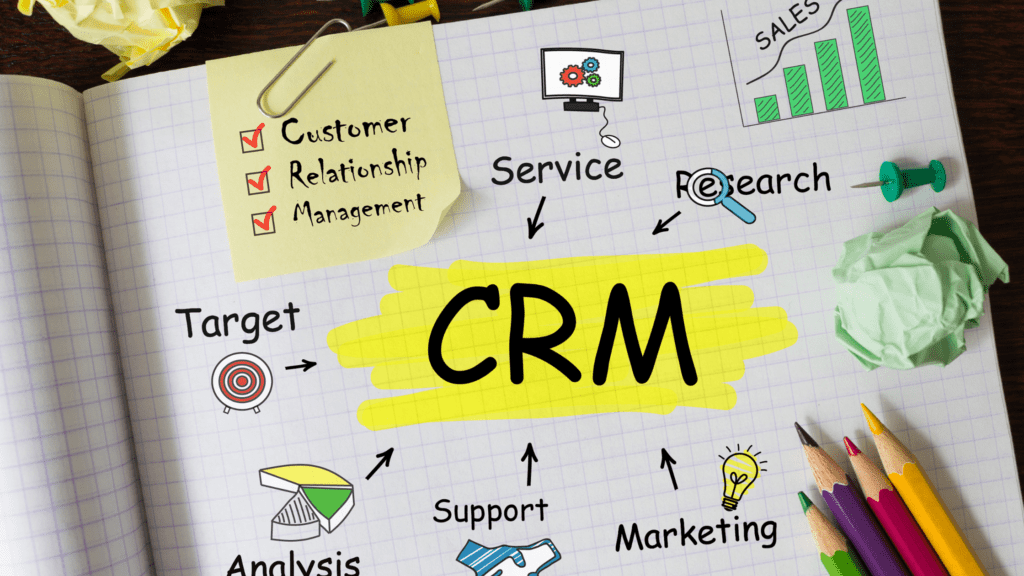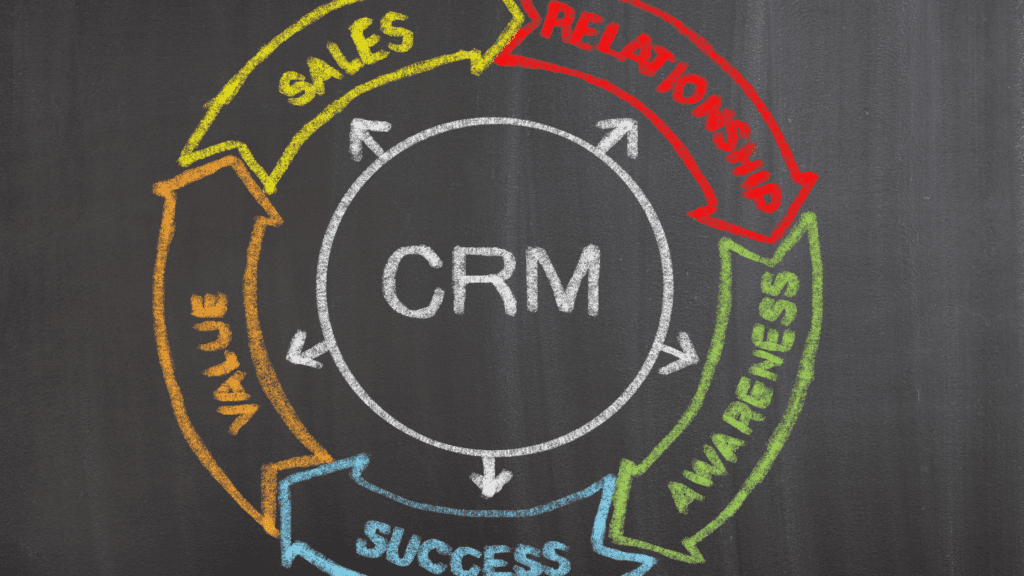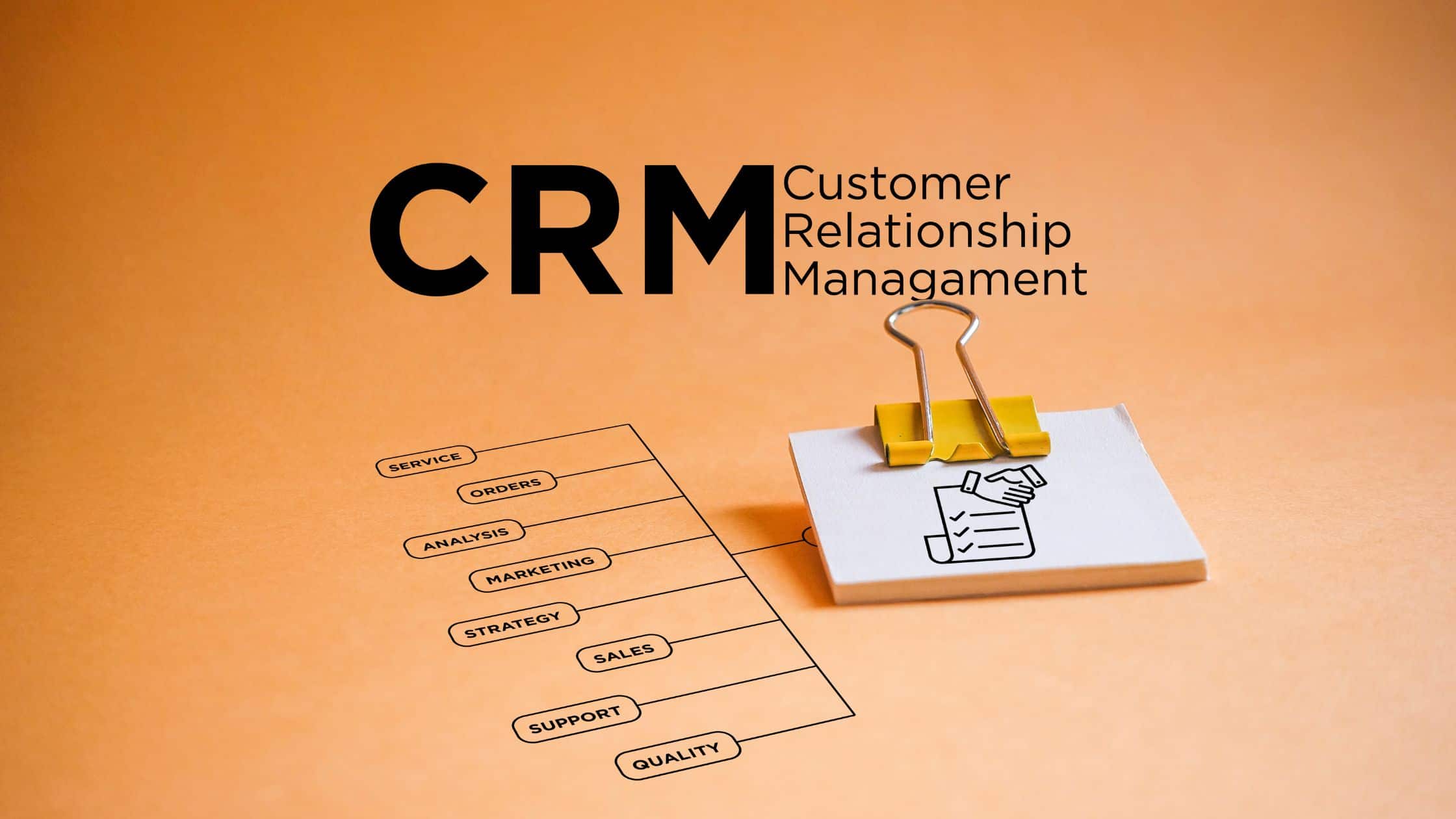With the availability of pre-built CRMs, smaller organizations are able to use the software more easily. But for those with unique requirements, there is still so much potential for improvement. Even while pre-made systems are inexpensive and practical, building a CRM system may be the solution to streamline the management of customer relations throughout your entire company.
Although it can seem complicated at first, this article breaks down everything so that you can get started right away.
Reasons To Use A CRM
While cookie-cutter CRM systems are undeniably practical, they are meant for a large audience. To assist most businesses is the goal. Instead of tools that are specifically designed for you, you end up with a wide variety of features.
The process of managing client interactions from beginning to end can be transformed by creating a CRM database from the ground up.
The biggest advantage is that your CRM may be tailored the way you like. You receive all the functionality you require without the excess features you won’t ever use.
It’s the greatest way—and possibly the only solution to guarantee that you get everything in one go.
Another noteworthy feature of customized CRM is data security. You won’t have to compromise on having features that suit a wide variety of other firms if you have your own CRM. You can get rid of obsolete source code that increases the risk and vulnerability of third-party plugins.
Instead, you are free to use the most cutting-edge security measures to form a system that is unbreakable. Standard security should suffice for most people.
However, developing a CRM system is a great approach to establishing your desired levels of security standards if data protection is a top priority.
Additionally, bespoke CRM enables complete integration control. Although some pre-packaged CRMs come with open APIs, custom solutions let you build out the most sophisticated tool stacks that function the way you need.
Additionally, a customized CRM makes it simpler than a pre-built CRM to integrate several departments into a single standard system.
You may manage every facet of the client relationship with a tailored solution. With a system designed to work for everyone, you won’t be able to be as innovative in the way you interact with your current and potential clients.
How To Build A CRM System

Building a CRM from scratch involves a significant time and financial commitment. If you wondering which CRM system is the best, I recommend looking at this article on the best CRM Software. Without having to create anything entirely new, you might find something that already addresses your needs.
The majority of premium CRM software offers integrations to make up for any features and functionalities that are lacking.
The following are the phases involved in creating a custom CRM:
1. Starting the planning phase
2. Picking a development team
3. Contacting your development team
4. Examining your choices
5. Obtaining design approval
6. Launch the software
If you have decided that a customized CRM is your best option, follow these steps on how to build a CRM software.
1. Building A Business Case For CRM
Conduct a brainstorming session as the initial step in creating a CRM. Include the departments of sales, customer service, and marketing. The entire purpose of a CRM system is to promote collaboration across departments. A unified system allows for seamless transitions between the many departments rather than each doing their individual tasks at different points in the sales process.
Find out the requirements for the CRM at this meeting. What is it that the CRM should accomplish for your company? Create specific goals or determine how the solution can fulfill the company’s current objectives.
For instance, a data-driven CRM is appropriate if your main objective is to take an analytical approach. On the other hand, a CRM with lots of automation is an excellent choice if your objective is to save costs.
Create the quality specifications for the CRM system as well. Software that adheres to FDA, ASTM, and ISO standards might be of interest to you. Determine the precise functionality you require from the CRM.
Involving multiple departments is helpful in this situation. Make a function tree by compiling all the different task categories from each department.
2. Picking A Development Team
Ready-made CRMs are there for a reason. Even though your development team may be skilled, their efforts may be better spent on other aspects of your business.
Working with subject-matter specialists will help you build a tailored CRM that is worth the time, money, and effort invested in it. When putting together your development team, take into account things like their portfolio, professional background, and past client testimonials.
I recommend going with a preeminent provider of software development and IT consulting services.
There are companies catering to various industries, including manufacturing, retail, healthcare, professional services, finance, telecoms, etc. with several years of expertise in developing custom CRM.
Pick one that collaborates with top CRM providers like Salesforce and Microsoft.
3. Contacting Your Development Team
It’s time to take the plunge when you have a better understanding of what is needed from the CRM system and have found a development team. Contacting them will probably lead to a preliminary consultation.
Most likely, you won’t be given an estimate right away. The requirements for your CRM platform will be first discussed by a sales representative. To enable the development team to fully understand your needs, you will receive a comprehensive list of questions.
During this phase, don’t be shy about seeking clarification and asking questions. Maintain an open dialogue with your sales, customer service, and marketing teams as well as with stakeholders. As the conversation with the development team progresses, keep everyone updated. This stage guarantees that the CRM platform fits the needs of every department.
4. Examining Your Choices
When having initial conversations with the development team, be open-minded. It could be unnecessary to create a CRM system from the ground up. You might be fine with adapting an existing platform unless you service a very narrow niche or have very unique requirements.
It’s about striking the ideal balance between using pre-made software and creating custom applications. If the foundation of the software is already available for customization, simply add the necessary modules that are needed.
These modules could include ones for tracking KPIs, productivity, or performance. Instead of making your company adapt to the software, these highly adaptable modules could fit to your existing processes.
You can save a lot of time and financial investment on software development by choosing the relevant option. You should be guided through this procedure by your development partner.
What Are The Main Components Of A CRM System?

Regardless of your preference, the chosen team will incorporate the following features into the custom CRM:
- Customer care
- Automation of sales
- Partner and customer management capabilities
- CRM integration
- Business-specific features
- Data Analytics
- Marketing Features
- Company-wide collaboration tools
Make sure that you are satisfied with what is being offered if you decide to work with a specific company.
5. Obtaining Design Approval
To finalize the finished design, consult with the teams and stakeholders. When ready, it is way easier to implement software that everyone approves of.
By this point, you ought to be able to reasonably predict the development time and the cost of the project. Give the go-ahead to your development team. A reliable partner will inform you at every stage.
You won’t need to stress about technical issues like code, testing, environments, etc. if you use a reputed company. All of this is handled by the developer.
6. Launch The Software
You’re about to deploy the software after everything is built. Every part of the process, such as data transfer to the released platform and team training programs, should be supported by your development partner.
Having a development team who gets you involved in the quality control and testing of the custom platform is also a huge bonus. Only your group can put your bespoke CRM to the test, but a skilled developer will be rigorous about finding issues.
At this point, continuing support is crucial more than ever. CRM systems are inevitably complex, therefore stress testing every component that your staff will work with can take weeks or months. Have a plan in place for dealing with urgent problems and developing patches and fixes right away.
How Much Does It Cost To Build A CRM System?
When you try to build your own CRM system, having your own team of developers or experience with software development and coding is very advantageous but not required.
After all, you can get guidance on the items you can’t perform by yourself by hiring independent contractors, freelancers, or an agency.
The dev teams for CRM development can make your CRM objectives a reality. The cost of creating software is merely one item to take into account; there are many others.
So how much does a CRM implementation cost? And how long does it take to build a CRM?
The complexity and functionality you require will determine the real cost of building a CRM database. Depending on what you need, prices range from $25,000 to as much as $500,000. Although this is a broad range, it really depends on the scope of the work.
The majority of CRM software combines marketing, sales, and customer service. Many also contain collaborative, analytical, and operational tools that facilitate teamwork, expedite processes, and convey consumer data in an understandable way.
Therefore, there are many factors to take into account when investing time and energy into the project.
1. Marketing Features
As your firm expands and your marketing operations reach more consumers or channels, CRM marketing technologies are available to automate, streamline, and monitor marketing initiatives. When you get started, manual efforts are effective. But as you expand, those initiatives will become impractical, which is why marketing features are so crucial.
Time may be saved by automating and streamlining marketing efforts. By monitoring and evaluating your results, you can continue following what works and make decisions based on data.
Features of typical marketing modules include:
Customer Categorization
This enables the high-level segmentation of customers in accordance with their purchases, demographics, preferences, worldviews, and behavior. Segmenting features can range greatly from being really basic to extremely complex, depending on whether you need customers to segment themselves, manual segmenting, automation to segment the audience as your contacts grow, or a combination of them all. It can take up to 3 months of development time and multiple iterations until it is completely functional. It can cost anywhere between $4,000 and $8,000 to develop from scratch.
Campaign Management
This is the hub for coordinating marketing events. Users may design and handle marketing initiatives across many channels, delegate work to group members, centralize marketing content, measure spending and return on investment, and evaluate effectiveness using campaign features. Between $9,000 to $16,000 is the anticipated cost of marketing campaign management, with a 3-month development period.
Real-time Marketing Metrics
They are provided for all marketing efforts. Having the data you require is essential for sustaining growth, including tracking specific campaign components and complete campaigns, comparing success across channels or with targeted audiences, and budget analysis. An analytics platform can be built from scratch for about $5,000 and $10,000 and take around three months to complete.
2. Sales Features

Your sales team’s effectiveness is increased via sales automation. Tools for keeping track of and managing the complete list of present and potential clients are available in most CRM sales modules. Sales calls, cold outreach, demos, closing transactions, and monitoring hot leads that need to be converted to customers are crucial components in the sales pipeline, as are phone conversations with current customers.
The following are typical sales modules that facilitate those tasks:
Account Management
Consists of elements such as the Dashboard, Opportunities, Toolbar, Accounts, Pipelines, Leads, Contacts, and Tasks. This functionality of allowing users to access many areas and features is the CRM software’s core feature. The cost of developing this feature can range between $30,000 and $50,000 and takes about 4 months.
Sales Forecasting
Users can forecast sales and make plans using this feature. The portion takes about 3 months and costs between $7000 and $14,000.
Sales Analytics
Aids representatives in identifying sales patterns. Users can enhance the data representation by viewing it based on location, color, timeline, or other factors through an advanced analytics section. This portion takes about 3 months to build and costs between $6,000 and $9,000.
3. Customer Service Features
A customer-centric feature, such as customer success or support agents, is a necessity for any CRM system. Customer satisfaction is ensured by this feature. All client calls, tickets, emails, and chats are collected in the backend by this module for quick retrieval.
Features of customer service modules are:
Help Desk
Support agents can see inquiries, issue tickets, set priorities for tasks, reroute tasks, and more using the help desk console, which has a simple user interface. The development of this functionality takes roughly 3 months and costs between $25,000 to $30,000.
Analytics & Metrics
This mostly aids in monitoring how effectively the support staff resolves issues. Additionally, the system keeps track of statistics on customer requests made via social media, email, chat, and phone calls. This tool takes roughly 3 months and costs between $8000 and $10,000.
The very minimum required for a real CRM is represented by the aforementioned modules. Additional expenses are also anticipated for:
- Planning
- System updates
- Technical assistance
- Employee training
Knowledge Base
Provides customer service representatives with all the data and tools they require to carry out their responsibilities. All of the important details about the service or product are contained in the knowledge base. The price to develop it ranges from $6000 to $9,000.
Final Thoughts
The journey doesn’t end with the deployment of the new software. The climate for doing business is constantly evolving and changing. CRM solutions, whether they are pre-built or customized, should naturally reflect this changing business environment.
Keep in touch with your development partner on a regular basis. You might have professionals on hand who can provide long-term support for the software.
Your best option, though, is your development partner. You can prevent diverting your IT team’s attention from the software’s primary purpose because your development team would be more familiar with it.
In order to support changing user needs, the partner continuously fine-tunes the CRM’s features and procedures.
To guarantee that the platform stays relevant to the company’s ongoing digital transformation, the partner may also assist with the implementation of ongoing enhancements.
Consider having regular consultations with the development team as well. After all, you want to manage problems before they arise.
You may probably run into issues that your new software isn’t capable of handling. The development team can assist you in coming up with ways to enhance the system and in handling any little or big modifications to the CRM platform.
